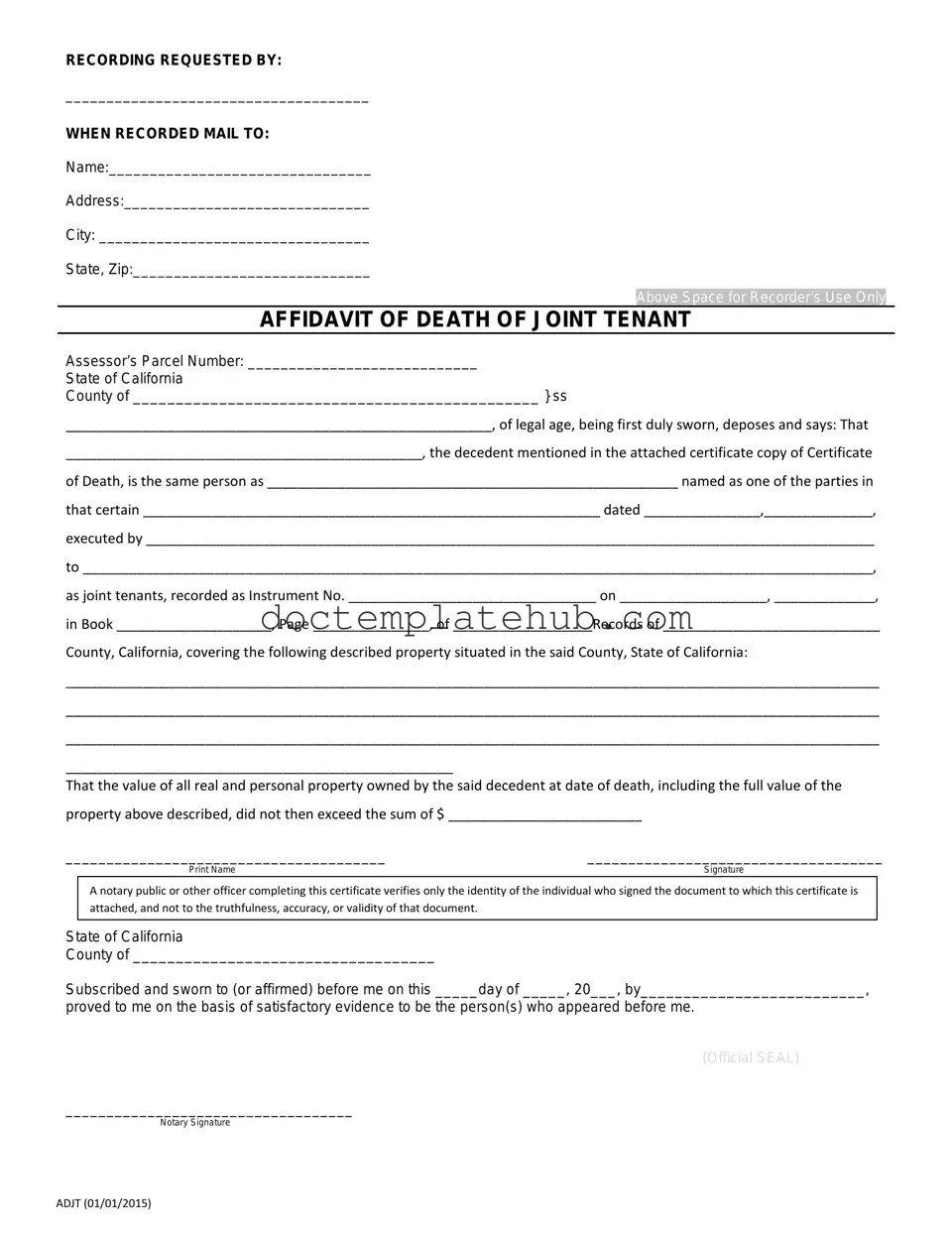What is the California Death of a Joint Tenant Affidavit?
The California Death of a Joint Tenant Affidavit is a legal document used to transfer the interest of a deceased joint tenant in a property to the surviving joint tenant(s). This form helps simplify the process of ownership transfer without going through probate, which can be time-consuming and costly.
Who can use this affidavit?
This affidavit is intended for surviving joint tenants who wish to assert their ownership rights after the death of a co-owner. It is applicable in situations where the property was held in joint tenancy, meaning both parties had equal rights to the property during their lifetimes.
What information is required to complete the affidavit?
To complete the affidavit, you will need to provide information such as the name of the deceased joint tenant, the date of their death, and details about the property in question. Additionally, the surviving joint tenant(s) must sign the affidavit, affirming the facts presented within it.
How does this affidavit affect the property title?
Once the affidavit is properly executed and recorded with the county recorder's office, it serves as legal proof of the transfer of ownership. The title will be updated to reflect the surviving joint tenant(s) as the sole owner(s) of the property, eliminating the deceased joint tenant's interest.
Is there a fee associated with filing the affidavit?
Yes, there is typically a fee for recording the affidavit with the county recorder's office. The fee can vary depending on the county, so it is advisable to check with the local office for specific amounts. There may also be additional costs if you choose to have the affidavit notarized.
Do I need a lawyer to complete this affidavit?
While it is not legally required to hire a lawyer to complete the affidavit, consulting with a legal professional can be beneficial, especially if there are complexities involved in the property ownership or if there are disputes among heirs. A lawyer can provide guidance and ensure that the affidavit is completed correctly.
What happens if there are multiple surviving joint tenants?
If there are multiple surviving joint tenants, all of them must sign the affidavit to affirm their joint ownership. The document should accurately reflect the names and signatures of all surviving tenants to ensure a smooth transfer of ownership.
Can the affidavit be contested?
While the affidavit serves as a legal document affirming ownership, it can potentially be contested if there are disputes regarding the validity of the joint tenancy or the circumstances surrounding the deceased's death. If someone believes they have a claim to the property, they may seek legal recourse to challenge the affidavit.
How long does it take to process the affidavit?
The processing time for the affidavit can vary depending on the county's workload and procedures. Generally, once submitted, it may take anywhere from a few days to a few weeks to be recorded. It is advisable to follow up with the county recorder's office for updates on the status of your filing.
What should I do after the affidavit is recorded?
After the affidavit is recorded, it is important to keep a copy for your records. You may also want to update any other legal documents, such as wills or estate plans, to reflect the change in property ownership. Additionally, consider notifying relevant parties, such as insurance companies or mortgage lenders, of the change in ownership.
